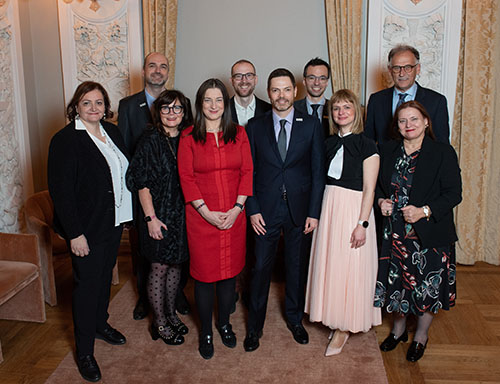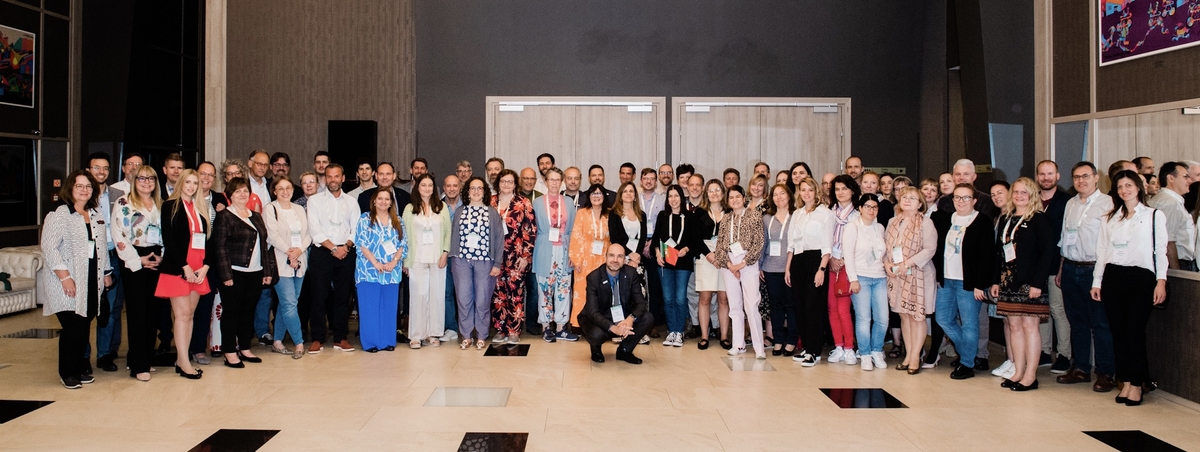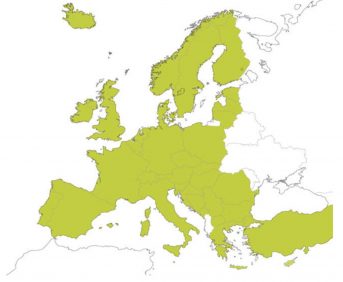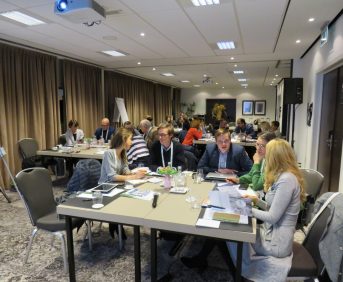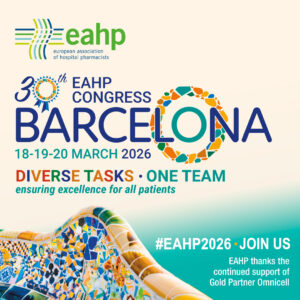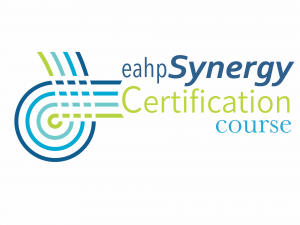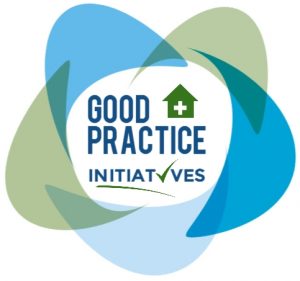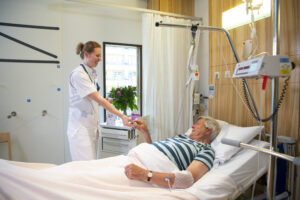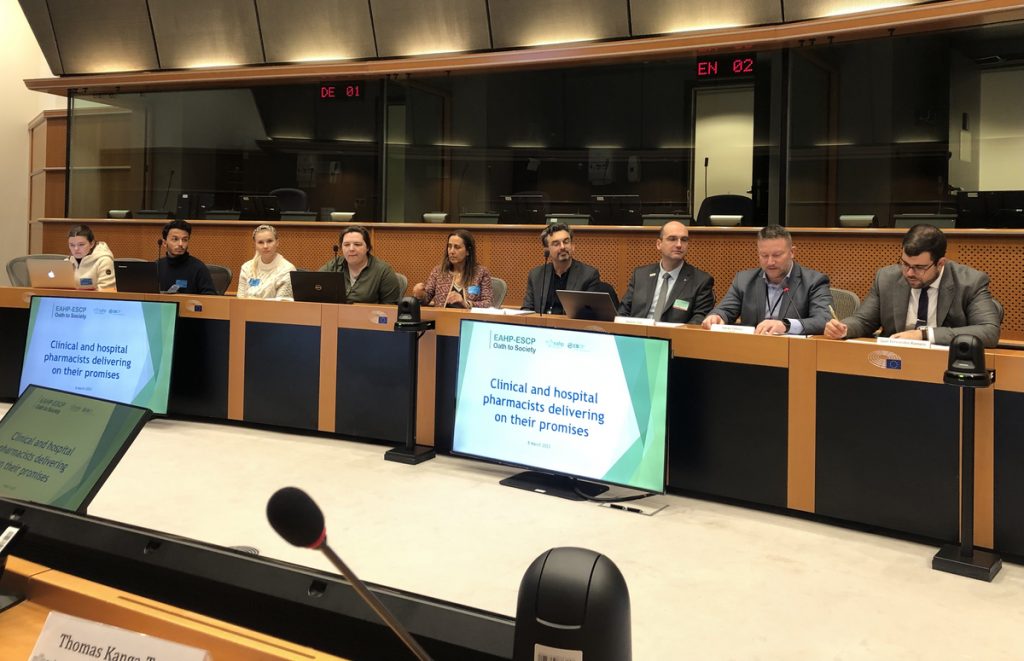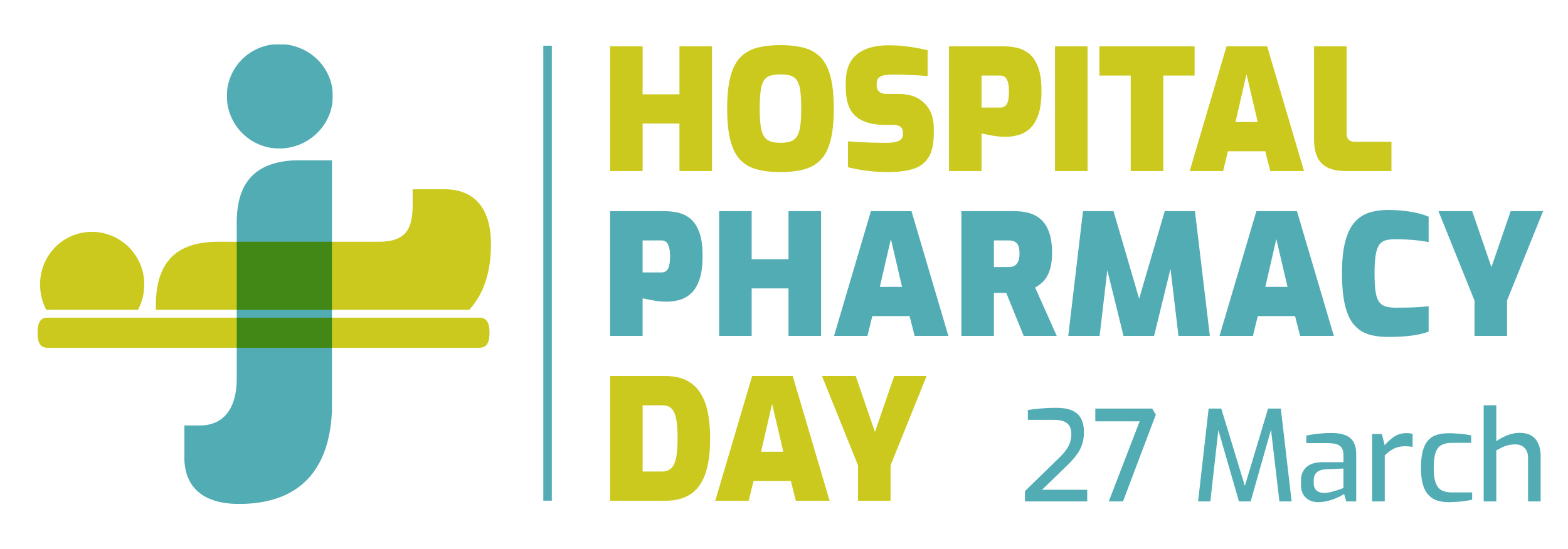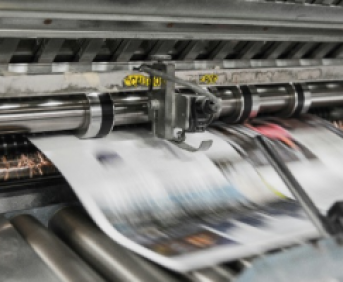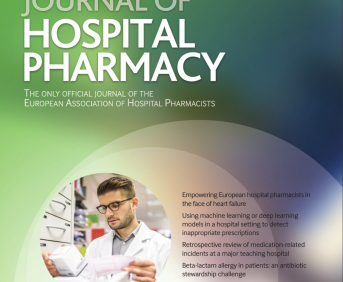Romiplostim preparation and distribution in ready to administer weekly syringes to patients
Pdf

European Statement
Production and Compounding
Author(s)
BELEN SANCHEZ PASCUAL, IRENE SALVADOR LLANA, ANA MARIA MARTIN DE ROSALES CABRERA, MONTSERRAT PEREZ ENCINAS
Why was it done?
Romiplostim should be administered once weekly as a subcutaneous injection. The initial dose is 1µg/kg. According to platelet response (PR) the dose should be increased until the patient achieves platelet count over 50,000 platelets/µL(maximum dose=10µg/kg). In order to maintain durable PR, weekly doses of romiplostim are prescribed and adjusted every 4-6weeks. Although patients could be trained for the injection preparation, many had reported difficulties to understand instructions and calculations of concentrations/volume. Romiplostim vials have a significant overdose to ensure the extraction of the declared amount. The actual content of the 250µg vial was found to be 360 µg (110µg excess). The 500µg vial contents 600µg. In addition, patients should discard the unused part. The aim is to centralise the preparation/distribution of individualised weekly doses of romiplostim for each patient in RtA syringes that allows them to receive the correct dose and to maximise the use of vials.
What was done?
We develop a procedure for the preparation and distribution of individualised weekly doses of romiplostim prepared in the sterile preparation area in prefilled syringes Ready to Administer (RtA) by the patient.
How was it done?
The Pharmacy service (PS) prepares the individualised doses in syringes RtA in a laminar-flow cabinet. The waste of the vial is kept to be reused.
The main obstacle is the increase in the volume of daily preparations in the PS due to dose individualisation. This obstacle is overcome with fluid communication with the Haematology service that reports prescriptions with a duration of up to 21 days (if the patient´s control is adequate).
What has been achieved?
From the past 3 years (2019-2021), we prepared individualised syringes for 36 patients. The centralised preparation reduces unused romiplostin waste allowing a cost saving of near 50% of drug spending. Specifically, in this 3-year period, €385,759.00 were saved.
What next?
Preparation of RtA syringes of romiplostim under sterile conditions in a laminar-flow cabinet helps patient’s auto-administration (since is an easier dispositive) and allows for greater use and significant economic savings. It is a process that can be easily extrapolated to any PS. Next step would be to carry out stability studies in order to be able to work further in advance and allow to space out hospital visits of well-controlled patients.
25% sodium thiosulphate in the topical treatment of calciphylaxis
Pdf

European Statement
Production and Compounding
Author(s)
VIRGINIA PUEBLA GARCIA, MARIA MOLINERO MUÑOZ, ANA ANDREA GARCIA SACRISTAN, JAVIER CORAZON VILLANUEVA, LIDIA YBAÑEZ GARCIA, NATALIA SANCHEZ-OCAÑA MARTIN, PALOMA PASTOR VARA, MARIA FERNANDEZ-VAZQUEZ CRESPO, JOSE MANUEL MARTINEZ SESMERO
Why was it done?
Calciphylaxis is a vascular disorder characterised by the accumulation of calcium in the small blood vessels of the skin and adipose tissue. There is an imbalance in calcium metabolism which causes calcium to be deposited in the arterioles favouring thrombosis in the residual lumen of these vessels. It presents with severe painful skin lesions which progress to ulcers. It mostly affects patients on renal replacement therapy.
What was done?
To describe the making process of a 25% sodium thiosulphate ointment (ST25%) requested by the Nephrology Department as an off-label use for the topical treatment of calciphylaxis in a patient who was unable to use intravenous sodium thiosulphate (ST) due to haemodynamic instability.
How was it done?
We initially performed an online literature search of databases related to raw materials and excipients, experience of use with formulas prepared by other hospitals as well as articles related to calciphylaxis.
For the production and quality control, the Standard Operating Procedure (SOP) for ointments described in the National Formulary was followed. To establish the risk level of the preparation and the expiry date, a risk matrix was used according to the Guide to Good Pharmacy Preparation Practice (GBPP).
What has been achieved?
It was decided to make a ST25% ointment. Composition for 100 g: ST 25 g (active ingredient), glycerine 10 g (humectant, cosolvent), pure lanolin 32.5 g and white filmy petrolatum 32.5 g (vehicles).
Production: the ST crystals were pulverised in a mortar. Glycerine was gradually added on top of the ST until a uniform whitish paste free of crystals was formed. At the same time, lanolin and filmy petrolatum was mixed in the final container with the help of an emulsifier. Finally, the paste formed with ST and glycerine was added to the lanolin-Vaseline mixture and stirred in the emulsifier until a homogeneous ointment was obtained.
A yellowish ointment with a homogeneous appearance, oily texture and no crystals was obtained.
Expiry date: 30 days after opening. Low-risk preparation.
What next?
Calciphylaxis could be treated after intolerance to intravenous sodium thiosulphate by developing an ointment. The pharmacist through magistral formulation can provide pharmaceutical alternatives in situations where the use of commercially available medicines is not possible.
Development of an oral ketamine: compounding and creation of a pharmaceutical care circuit for phantom limb syndrome
Pdf

European Statement
Clinical Pharmacy Services
Author(s)
Javier Corazón Villanueva, Natalia Sanchez-Ocaña MartínPast, Virginia Puebla García, Lidia Ybañez García, Maria De la Torre Ortíz, Paloma Pastor Vara, Maria Fernandez-Vazquez Crespo, José Manuel Martínez Sesmero
Why was it done?
The PLS is the perception of a non-existent limb that may occur in up to 80% of amputees. The management of this syndrome is complex and alternative drugs are sometimes used for the treatment. The absence of a marketed formulation, off-label use of drugs and the complex treatment of pain make the role of the pharmacist essential.
What was done?
Development and validation of an oral ketamine compound and a specific pharmaceutical care circuit (PCC) as a part of the treatment of phantom limb syndrome (PLS).
How was it done?
A literature search was carried out on the preparation of this compounding, as well as on the use of oral ketamine (bioavailability, dosage, adverse reactions).
An oral solution of 10mg/ml was prepared (final volume 50ml: 500 mg of injectable ketamine solution or raw material, 20 ml of simple syrup with a sufficient amount of purified water and 2 drops of lemon essence). To establish the expiration date recommendations of Good Manufacturing Practice Guideline were followed and the organoleptic characteristics were evaluated for quality control.
The PCC created consists of the following stages:
1. Setting up a first presential visit to provide pharmaceutical care during admission: to inform the storage conditions, most common adverse effects and recommendations about medication intake.
2. Dispensing at discharge and initially appointments every 7 days for a closer follow-up: control of adverse reactions (confusion, agitation, nausea, etc.), monitoring of the appropriate use of ketamine and other analgesic medication (avoiding possible abuse and addictive behaviour) and pain control. Pharmaceutical interventions are communicated to the pain management unit (PMU).
3. Spacing of visits fortnightly once the treatment is well-stablished and proposing a telepharmacy service.
What has been achieved?
The ketamine formulation developed has been used in our hospital in three patients with satisfactory results. The interventions carried out were: pain control problems, possible inappropriate use, reduction in the number or dosage of concomitant medication or ketamine itself.
What next?
The capacity to provide therapeutic alternatives and a more exhaustive pharmacological control of pain in collaboration with the PMU can improve the safety and effectiveness of these treatments.
Preparation of monoclonal antibodies on the pharmacy benchtop – risk assessment and practical considerations
Pdf

European Statement
Production and Compounding
Author(s)
Aidan Morris, Louise Byrne
Why was it done?
• mAbs were considered hazardous if handled by staff – prepared in a dedicated isolator in the PAU in TUH.
• No widely accepted standards for safe handling of mAbs, although more recent guidance allows preparation of some mAbs outside of PAUs once risks appropriately assessed.
• Significant reduction in production capacity in the PAU in early 2022 for planned repair work. Benchtop preparation of mAbs implemented to maintain patients’ treatment regimens and to reduce costs associated with outsourcing.
What was done?
• Preparation of monoclonal antibodies (mAbs) on the pharmacy benchtop temporarily introduced in the Pharmacy Aseptic Unit (PAU) of Tallaght University Hospital (TUH).
• Guidance from Ireland’s National Cancer Control Programme (NCCP) on Pharmacy Benchtop Preparation of mAbs reviewed and implemented.
• Risk assessment carried out for individual mAbs. List of mAbs suitable for benchtop preparation prepared.
How was it done?
• Implementation of the NCCP guidance on Pharmacy Benchtop Preparation of mAbs. Advice on risk assessments and safety, equipment and facilities, and staffing and training when preparing mAbs on the benchtop.
• Literature review of the hazards associated with handling mAbs – toxicity, immunogenicity, risk reduction measures. Individual mAbs assessed for suitability for benchtop preparation using Health Service Executive (HSE) risk assessment tool. This considered toxicity, immunogenicity and closed system transfer device (CSTD)-compatibility of mAbs, and personal protective equipment required.
• CSTD vial adaptor based on air cleaning (filter) technology replaced with vial adaptor with physical barrier (balloon) – additional safety measure. Dedicated area assigned for benchtop preparation – well-ventilated, clutter-free and easy-to-clean.
• Additional training on new vial adaptor provided to pharmacy technicians already experienced in aseptic compounding.
What has been achieved?
• List of mAbs suitable for benchtop preparation prepared. Conjugated antibody-drug complexes, mAbs of fully murine origin and mAbs not CSTD-compatible deemed unsuitable.
• mAbs prepared on the benchtop during period of reduced capacity, maintaining patients’ treatment regimens and reducing outsourcing costs, wastage.
• Facilitated by risk assessment and risk reduction using PPE, training and CSTDs.
What next?
• Although safety and handling requirements of mAbs not fully known, prudent to handle them with more care than most drugs but less than for cytotoxics.
• Contingency plan for benchtop preparation of mAbs in case of future reduced PAU capacity.
• Can be applied to other organisations experiencing periods of reduced capacity.
Compounding of oral acitretin suspension for paediatric patient with Harlequin Ichthyosis
Pdf

European Statement
Production and Compounding
Author(s)
Giorgio Penocchio, Irene Restivo, Francesca Caravaggio, Carla Galloni, Tullio Elia Testa
Why was it done?
Harlequin ichthyosis (HI) is a rare congenital disorder of keratinisation characterised by hyperkeratosis and scaling, often associated with underlying inflammation. On 18 April 2022, a newborn diagnosed with HI was hospitalised and clinicians have established, among other procedures and therapies and after dermatological consultation, the prescription of acitretin per os (1 mg/kg/d). However, the drug is not available in an appropriate dosage and formulation for a newborn with orogastric tube. The aim of this report is to show the development of an oral suspension of acitretin that allows the administration by orogastric tube.
What was done?
This case report presents the development of an extemporaneous preparation of acitretin from the commonly available capsule form. The drug was dispensed to nurses in prefilled syringes and administered enterally through the orogastric tube to treat a preterm neonate with a diagnosis of Harlequin ichthyosis.
How was it done?
In consideration of the teratogenic risk and extreme photosensitivity, the oral suspension was prepared without direct light under a biological safety cabinet. A 2 mg/mL 10 mL oral suspension was prepared from two capsules of 10 mg acitretin and using 10 mL of a suspending agent based on water, microcrystalline cellulose, sodium carboxymethylcellulose, xanthan gum, carrageenan, stabilising agents and preservatives The procedure involves attaching the Luer lock syringe to the arm with a clamp, capping with a combi-stopper and emptying the contents of the capsules required, transferring the powder quantitatively. Next, add the suspending agent to reach the final volume of 10 mL, close the end of the syringe with the plunger, connect a second syringe using a connector and mix by transferring the contents from one to the other.
What has been achieved?
The suspension was packaged in pre-filled syringes based on the required dose, closed with combi stoppers and placed in a UV bag. Given the lack of stability data, the validity period conferred was 5 days with storage at 2-8°C. The suspension was administered by attaching the syringe to the nasogastric tube and then washing down with water, limiting invasive procedures and consequently the associated skin infections.
What next?
Magistral galenic preparation made it possible to obtain a personalised therapy for a critical patient. Clinical galenics, put into practice thanks to the experience of the preparer pharmacist, represented the only possibility of treatment.
Operational interventions to improve the performance of cytotoxic medicines compounding
Pdf

European Statement
Production and Compounding
Author(s)
Leila Costa, Rui Marques, Ana Castro, João Paulo Cruz
Why was it done?
Cytotoxic medicines are drugs used mainly in the treatment of neoplasms. Their preparation is a key activity of Hospital Pharmacy, carried out in a Class II Type B2 Vertical Flow Chamber (VFC). With the emergence of new cytotoxic drugs, the increase in the number of patients (2100 in 2010 to 3168 in 2021), and preparations (from 30000 in 2010 to 40000 in 2021), the time spent by Pharmacists in routine work and in the organisation and research of information also increased, and innovative approaches in terms of resources optimisation are deemed.
What was done?
Evaluate the performance of cytotoxic compounding after the implementation of relevant operational interventions designed to optimise drug preparation and delivery, between 2018 and 2021 in a University Hospital Centre.
Retrospective analysis of the average waiting times of patients for treatment delivery in some day hospitals (DH), after implementation of the operational interventions.
How was it done?
We began with the computerisation of the chemotherapy protocols, in order to standardise the prescribed treatments, which allows to reduce transcription and prescription time and associated errors. A comprehensive database was also created with the main characteristics of cytotoxic drugs and their physicochemical stability, in order to support pharmaceutical validation. In partnership with DH nursing team, every patient’s treatment schedule was determined beforehand, which allowed an enhanced organisational workflow, and the grouping of more complex drugs to prepare at the same time, and the preparation of drugs with adequate stability in the day before. This resulted in a reduction of average waiting times from 2 hours to only 30 minutes. The DH that benefited the most from these changes was Haematology, which adopted all proposed changes from the start after a multidisciplinary team meeting. Currently, about 45% of treatments are prepared the day before. Since the compounding unit is structured in rotating shifts, this practice allows to minimise drug wastage and to reduce preparation time, which improves the organisational capacity and agility in response to patient needs. When available, preference was given to ready-to-use drug solutions instead of powder formulations, e.g. pemetrexed and bortezomib, reducing preparation time and increasing operator safety. Also, in Gastroenterology DH, we promoted switch from original infliximab to its biosimilar by centrally preparing the biosimilar. We used two pharmacy technicians in the same cabinet instead of one, increasing the preparation yield. The last intervention was in the transportation of the compounded preparations, through the implementation of the delivery of treatments via a pneumatic tube system. This system ensures the integrity of the material and the conformity of the transport, thus allowing the safety and stability of the material transported, without bumps and avoiding changes in physical properties. It was possible to obtain a higher frequency of transportation and better workflow at peak times.
What has been achieved?
With the same human resources and the operational changes described, it was possible to improve the compounding unit performance, and to reduce patient waiting times in 75%, saving time and money.
What next?
With the increasing number of patients and cytotoxic preparations, it was necessary to reorganise the compounding unit in several key features.
Initiative to introduce database of compounded pharmacy preparations at the University Hospital Centre Zagreb
Pdf

European Statement
Production and Compounding
Author(s)
Mateja Ljubičić, Mirela Sadiković Tvorić, Mirela Ganza, Mirna Alebić
Why was it done?
Minimising quality and safety differences between commercially available medicines and compounded pharmacy preparations depends on the pharmacists’ professional education and skills. The purpose of this initiative is to specify the most common pharmacists’ adjustments of the commercially available medicines and to determine the level of quality assurance and safety measures which should be applied to the hospital pharmacy throughout planning the procurement of installations and equipment.
What was done?
Our existing computer system does not have the ability to provide information on the compounded pharmacy preparations made in the hospital pharmacy from raw material or commercially available medicines. We have introduced a database for keeping up-to-date records of pharmacy preparations compounded by pharmacists for special needs of paediatric population in the University Hospital Centre Zagreb in a period of 6 months.
How was it done?
The following information on pharmacy preparations were added to the new database: dosage form, dosage strength, shelf life and serial number of the commercial drug or raw material that was used; patient data: name and hospital department unit; and identification of the pharmacist. Data was structured as presented in Table 1. and Table 2.
Pharmacists’ adjustments Total Number
dosage strength Oral divided powders (DPs) 628
dosage form Extemporaneous oral liquids 473
In total 1101
Preparations with HD Aseptic processing Containment Complexity of process
0.05% Cyclosporine eye drops + + 2
1% 5-FU eye drops + + 2
1% Voriconazole ear drops – + 1
Vemurafenib DPs – + 1
Imatinib DPs – + 1
Capecitabine DPs – + 1
Hydroxycarbamide oral suspension – + 1
Tretinoin oral solution – + 1
What has been achieved?
Keeping up-to-date records improved the traceability inpatient care and reduced the incidence of adverse events. Specific requirements for procurement of equipment for aseptic processing and containment of Hazardous Drug (HD) were successfully recognised.
What next?
Harmonisation of standards of pharmacy preparations throughout the country could be enabled by creating a national portfolio of preparations from all hospital pharmacies. This initiative of creating an overview of the pharmacy preparation practice should be considered in other hospitals to guide the pharmacy departments in the developing quality assurance programme.
Implementation of a Ph. Eur. compliant recombinant method for testing of bacterial endotoxins in sterile pharmaceuticals
Pdf

European Statement
Production and Compounding
Author(s)
Randi Hamre Svendsen, Vilde Pettersen, Theo Dogbeten
Why was it done?
Endotoxin testing by the gel-clot method is a limit test and relies on the operator’s subjective evaluation of the results. The procedure itself contains several steps and dilutions, and it is time and resource consuming. The availability of the amoebocyte lysate reagent can also vary since it is harvested from the endangered horseshoe crab. The recombinant factor C method (rFC) is a fluorimetric method based on the gene sequence of the horseshoe crab, providing quantitative results with no interpretation by an operator. The rFC method consists of less handling and is less susceptible to human error.
What was done?
The hospital pharmacy implemented a modern system for testing of bacterial endotoxins as a part of the quality control of raw materials (i.e. water for injection (WFI)) and sterile pharmaceuticals manufactured at the pharmacy, replacing the old gel-clot test.
How was it done?
All sterile pharmaceuticals manufactured at the hospital pharmacy were evaluated for maximum valid dilution (MVD) and endotoxin limit. Firstly, the optimal dilution of the products was established, and then tested with three different batches to ensure valid results regardless of any batch-to-batch variation. WFI was validated undiluted with batches from three separate days. Validation started with the most frequently manufactured products, and subsequently continued over the next year with the rest. To expedite the full validation of some products, expired batches were used simultaneously with at least one recently produced batch due to infrequent production times, otherwise a full transfer of method would not be achieved for up to six years.
What has been achieved?
In total, 25 sterile pharmaceuticals and raw materials were successfully validated for endotoxin testing by rFC during 2021 and 2022. The gel-clot method is no longer in use at the hospital pharmacy, reducing the negative impact on the horseshoe crab population. The rFC method streamlined the testing for endotoxins, reducing the time spent on performing the analysis by 50% with less handling and increased capacity. Results are quantitative and objective, not relying on observations by the operator, thereby improving the quality.
What next?
The rFC method increases both quality and capacity of testing, opening up for expanded testing in pharmacy, and of samples from other departments or hospitals.
Optimising the process for incoming requests for new extemporaneous products
Pdf

European Statement
Production and Compounding
Author(s)
Mette Lethan, Tove Hansen, Louise Rasmussen Duckert, Trine Schnor
Why was it done?
In the clinic, a need for a NEP, as either a change in an existing product or a new formulation, may arise. Requests are risk assessed by the Hospital Pharmacy Drug Information Centre (DIC) before production is initiated. However, there was no clear process for handling requests, resulting in prolonged process times. NEP may require searching for new raw materials, new packaging or developing of a new formulation, which are time consuming tasks. Therefore, the wish to optimise the process arose.
What was done?
A procedure for handling requests for new extemporaneous products (NEP) in a Good Manufacturing Practice (GMP) regulated production was developed to improve success rate and aligning the process.
How was it done?
A small unit was formed with the purpose of handling requests for NEP. The unit consists of academics employed in the production department with expert knowledge about both sterile and non-sterile production.
A standard operating procedure was formed, in collaboration with DIC, which included a form, to be filled out with information needed for handling the request. This includes drug formulation, strength and dosage, along with any specific requirements.
The unit evaluates the request – is it possible for us to manufacture, sterile or non-sterile, are raw materials available in appropriate quality, analysis requirements, and stability of the product. The evaluation is made in communication with departments like Purchasing, Quality Control/Assurance, Stability as well as the relevant production department.
If a positive outcome, the request is given to the production department, to finalise production. If the outcome is negative a rejection is sent to the requester with a reason.
What has been achieved?
Based on data from the last three years, we now know how many requests we receive, which type of products are requested, processing times, and which products were made and why/why not.
There is a clear path of communication into the pharmacy and between relevant departments, ensuring that essential pharmaceuticals will be developed in a timely manner or a justified rejection is sent enabling the clinic to look for alternatives.
What next?
Some products are difficult to handle, such as cytostatics, antibodies and hormones. Next step is to investigate these product types.
DEVELOPMENT OF A PROTOCOL TO STANDARDISE CELL-BASED MEDICINAL PRODUCTS HANDLING IN AN ONCO-HAEMATOLOGY CLINICAL TRIALS UNIT
Pdf

European Statement
Patient Safety and Quality Assurance
Author(s)
JOSE MANUEL DEL RIO GUTIERREZ, EUGENIA SERRAMONTMANY MORANTE, SARA GIMENEZ GINER, PILAR ROVIRA TORRES, PATRICIA GARCIA ORTEGA, CARLOTA VARON GALCERA, ISABEL CIDONCHA MUÑOZ, MARIA QUERALT GORGAS TORNER
Why was it done?
One of the most important challenges we currently face is the increase of clinical trials (CTs) including CBMPs. These drugs require special storage, preparation, delivery and administration; so developing standard operating procedures (SOPs) and ensuring proper coordination between all professionals involved, including pharmacists, is essential.
What was done?
Management of cell-based medicinal products (CBMPs) was protocolised in an onco-haematology clinical trials unit.
How was it done?
Pharmacists, doctors and nurses participate in a multidisciplinary team to standardise CBMPs handling. The following protocol was agreed:
1.The entire multidisciplinary team is notified when a CBMP prescription is planned to ensure proper coordination.
2.The CBMP is manufactured by the CT sponsor. Then, it is transferred to the blood bank for cryopreservation. CBMPs usually require a temperature between -80ºC and -200ºC and expire in some weeks.
3.Before CBMP administration, patients undergo lymphodepletion. The lymphodepletion regimen is performed according to the CT protocol or arranged between medical and pharmacy teams. Chemotherapy, serum therapy and antiemetic regimen are discussed and specified.
4.Once the treatment is prescribed, it is verified by a pharmacist who ensures its suitability.
5.On the infusion day, the blood bank delivers the CBMP. Then, a pharmacist checks if it arrives in proper condition and it is defrosted. The pharmacy department reconditions the CBMP in another infusion bag or syringe if required. This is the most critical point because CBMP expires after some minutes of defrosting, requiring extensive coordination.
6.CBMP is administered according to the CT protocol.
What has been achieved?
72 patients were recruited in 15 CT. 8 of them use as CBMP Chimeric Antigen Receptor T-Cells (CAR-T-CELLS), 4 Specific Peptide-Enhanced Affinity Receptor T-Cells (SPEAR-T-CELLS), 2 Tumour-Infiltrating Lymphocytes (TILs) and one cytokine-stimulated Natural-Killer-Cells (CS-NK-CELLS). Seven assays are intended for haematological neoplasms and eight for solid malignant neoplasms. One assay requires CBMP syringe reconditioning in the pharmacy department.
The described process optimises CBMPs handling, avoids delays in administration and reduces the risk of misuse.
What next?
CBMPs represent a novel therapy, and pharmacists have an essential role in developing new procedures to incorporate them into clinical practice. This protocol may be helpful for other centres to implement guidelines to work with CBMPs.
